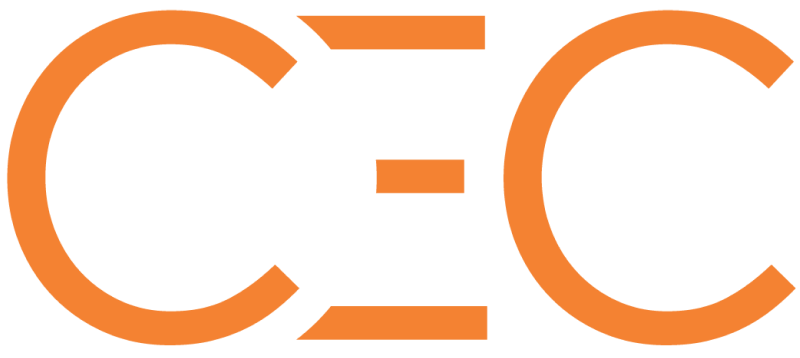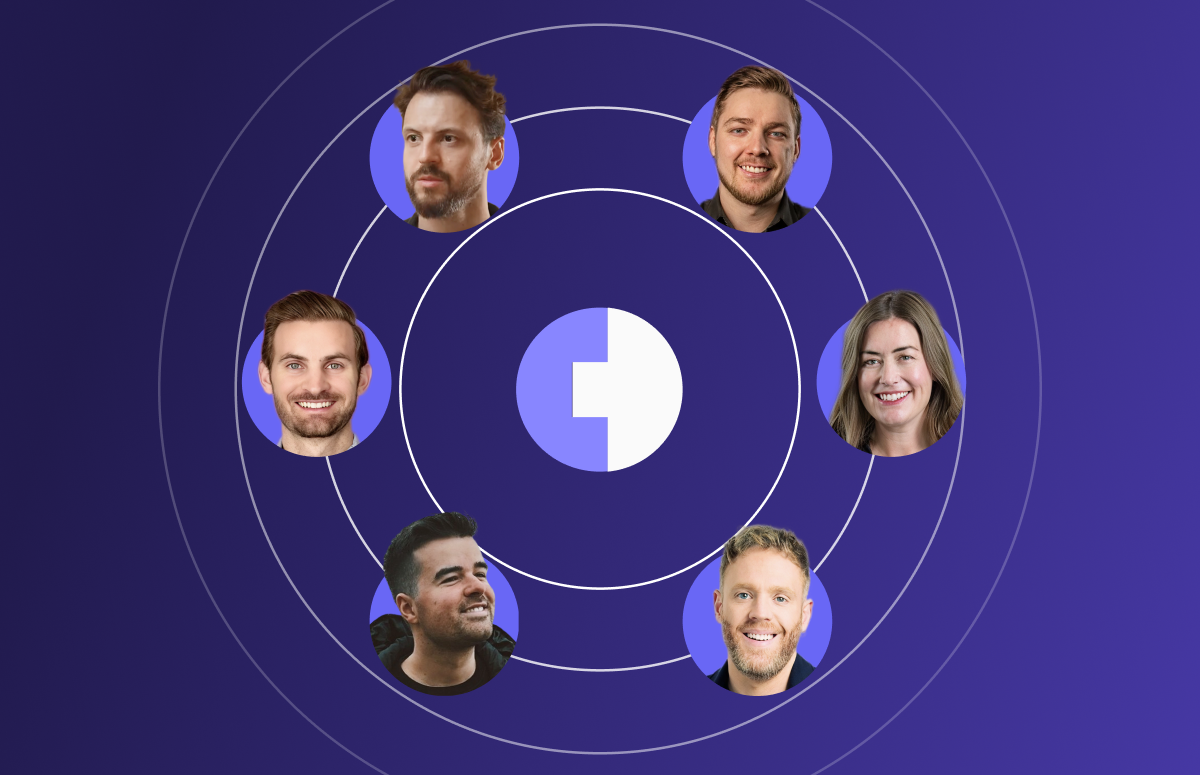Email Marketing Campaigns: 12 Examples That Convert
Email marketing campaigns FAQ:
Looking for more marketing resources? Check out the Cognism Content Hub 👇
Industry research from Litmus (2024 Email Benchmarks Report) shows that for every US$1 spent on email marketing, the average ROI is approximately US$38–US$45, depending on the sector.
At Cognism, email is one of our primary marketing channels. Over the past 18 months, it’s contributed to a 180% increase in ARR, powered by targeted, data-backed email marketing campaigns for nurture, re-engagement, and closed-lost recovery.
In this guide, we draw on industry benchmarks and our own campaigns to share what works and what to watch out for so you can build campaigns that engage and convert.
12 effective email marketing campaigns around
Here are 12 effective email marketing campaigns from Cognism and other organisations across different industries that have delivered measurable results.
Each example includes real‐world metrics, what made them work, and lessons you can apply to your campaigns.
1. Cognism rekindle nurture campaign
This email campaign targets leads who exited a sales cadence.
/Marketing%20Campaigns/Cognism%20rekindle%20nurture%20campaign.webp?width=488&height=450&name=Cognism%20rekindle%20nurture%20campaign.webp)
Subject line:
(first name), who’s buying right now?
Stats:
- Open rate 49.11%
- CTR 26.89%
Why it worked:
The message is short, with fewer than 100 words, so readers don’t get bored.
When you’re landing in an inbox, do the recipient a favour. They don’t want to read your essay. They want their information in an easily digestible format.
The reader should understand your offer at a glance. The image is engaging and immediately grabs attention. The CTA is clear, and readers know exactly what to expect after clicking the button.
Since this re-engagement campaign targets leads who exited a sales cadence, your cadence can be shorter.
Why?
Because these people already know what you’re all about.
What’s more, they’re warm(ish), and if you don’t use them, they’ll go to waste.
💡If you’re running an email campaign to fresh prospects from an email lead generation platform, run a longer cadence and provide more value before you make an offer.
2. Ben Goodey SEO content checklist campaign
Ben Goodey founded How the Fxck, one of the best resources for SEO case studies and innovative strategies.
/Marketing%20Campaigns/Ben%20Goodey%20SEO%20content%20checklist%20campaign.webp?width=457&height=500&name=Ben%20Goodey%20SEO%20content%20checklist%20campaign.webp)
Why it worked:
The first line is bold, prompting immediate attention and makes the key information easily digestible.
Keep reading, and you’ll encounter the 60% discount, a powerful incentive.
Plus, the message contains all the features the offer suggests. The vibrant orange CTA button guides recipients toward the desired action.
3. Cognism tech campaign nurture
/Marketing%20Campaigns/Cognism%20tech%20campaign%20nurture.webp?width=476&height=450&name=Cognism%20tech%20campaign%20nurture.webp)
Subject line:
Are you selling SaaS right?
Stats:
- Open rate 44.86%
- CTR 54.52%
Why it worked:
We initially sent a more generic version of this email to a broader audience and saw only ~25% CTR; once we segmented based on content interactions (post-download), CTR jumped to 54.52%.
Also, we A/B-tested subject lines (“Are you selling SaaS right?” vs. “Quick question about your SaaS approach”) and found that the more conversational, curiosity-driven version performs ~15% better.
4. BambooHR bundle up for onboarding success
BambooHR is an IT company that provides human resources software as a service for small and medium-sized businesses.
/Marketing%20Campaigns/BambooHR%20bundle%20up%20for%20onboarding%20success%20.webp?width=572&height=500&name=BambooHR%20bundle%20up%20for%20onboarding%20success%20.webp)
Why it worked:
The email marketing campaign example clearly communicates the value proposition related to onboarding processes. Additionally, it offers the best onboarding content wrapped up in a bundle accessible through CTA.
Regarding design, nice green colours make the email visually appealing.
5. Cognism closed lost ops nurture
/Marketing%20Campaigns/Cognism%20closed%20lost%20ops%20nurture.webp?width=423&height=500&name=Cognism%20closed%20lost%20ops%20nurture.webp)
Subject line:
We made this mixtape for (company)
Stats:
- Open rate 40%
- CTR 10%
Why it worked:
This B2B email marketing campaign starts with humour, which engages and activates recipients. The ‘safe’ option in marketing is to create wishy-washy content and avoid upsetting anyone. The truth is that if your email annoys some people but makes others laugh, it’s engaging.
And engaging is always better than boring.
Instead of one CTA, there are three, each in a different, bright colour. Offering a few options allows readers to choose one that resonates with them most.
That said, don’t go mad with CTAs. Remember the rule: always provide value.
An extra CTA in your email demonstrates that you want to deliver the right content. Ten extra CTAs demonstrate that you’re a desperate Dan.
6. LiveWebinar affiliate webinar campaign
LiveWebinar is a cloud-based solution that offers screen sharing, live video streaming, and recording features.
/Marketing%20Campaigns/LiveWebinar%20affiliate%20webinar%20campaign.webp?width=380&height=550&name=LiveWebinar%20affiliate%20webinar%20campaign.webp)
Why it worked:
The campaign email is well structured and contains all the information readers need. It also includes lots of emojis, which add a playful and engaging element to the message.
Two CTAs invite readers to save their seats and attend the webinar. The email clearly states that those who can’t attend the live webinar will receive the recording.
7. Cognism knowledge-sharing campaign
This email marketing campaign received a staggering 100% open rate and a CTR of 40%!
/Marketing%20Campaigns/Cognism%20knowledge-sharing%20campaign.webp?width=517&height=550&name=Cognism%20knowledge-sharing%20campaign.webp)
Why it worked:
The email subject line contains emojis, which lightens the email tone. However, you need to know when to use them.
If you’re prospecting to the C-suite, be careful! Emojis aren’t for everyone and can look unprofessional when sent to the wrong audience. This doesn’t mean never using them in a more professional campaign; just use them sparingly.
This email also worked because it features a customer success story. This solid reference builds trust, making recipients more likely to engage with the offer.
So…how did we achieve a 100% open rate?
We sent our prospects an email we knew they’d open because it was relevant to the other emails they’ve interacted with.
That’s data-driven marketing.
8. Pendo product management course early access campaign
Pendo is a product analytics tool that helps software companies develop products that resonate with customers.
/Marketing%20Campaigns/Pendo%20product%20management%20course%20early%20access%20campaign.webp?width=495&height=550&name=Pendo%20product%20management%20course%20early%20access%20campaign.webp)
Why it worked:
Using the term “Early Access” creates a sense of exclusivity and urgency. It prompts recipients to be among the first to access valuable content.
The email marketing campaign example has clear and compelling messaging, highlighting the benefits and value proposition of the product management course.
The call-to-action guides recipients toward the next step in taking the course.
9. Social Media Examiner guide campaign
Social Media Examiner is a US-based media company that educates marketers on using social media to connect with customers, generate awareness, and increase sales.
/Marketing%20Campaigns/Social%20Media%20Examiner%20guide%20campaign.webp?width=602&height=400&name=Social%20Media%20Examiner%20guide%20campaign.webp)
Why it worked:
The intriguing subject line “Guide Campaign to Marketing Jungle” sparks curiosity and entices recipients to explore the content. The writing tone is friendly and humorous, with an extensive use of emojis.
The message sets expectations and clearly states what the recipient will read in that edition.
10. Content Goblins campaign
Kevin Indig is a growth advisor and the writer of the technical SEO newsletter “Growth Memo.”
/Marketing%20Campaigns/Content%20Goblins%20campaign.webp?width=519&height=550&name=Content%20Goblins%20campaign.webp)
Why it worked:
The email starts with a big announcement that Growth Memo Premium will launch soon. The message communicates the value proposition and highlights the recipients’ benefits upon getting a paid subscription. The content is easily digestible and isn’t sales-y.
11. Hotjar campaign
Hotjar is a product experience insights platform that helps users gather digital experience insights with heatmaps, session recordings, surveys, and user feedback.
/Marketing%20Campaigns/Hotjar%20campaign%20.webp?width=439&height=750&name=Hotjar%20campaign%20.webp)
Why it worked:
The message is visually appealing and contains nice illustrations that break up the text. It’s well-structured and resonates with the recipient’s pain points.
Finally, a persuasive CTA invites recipients to install the tracking code to learn why people leave their site.
12. LevelUp by ClickUp campaign
LevelUp is the ultimate productivity conference hosted by ClickUp. It unites business and productivity experts with people looking to level up their lives using ClickUp.
/Marketing%20Campaigns/LevelUp%20by%20ClickUp%20campaign.webp?width=357&height=550&name=LevelUp%20by%20ClickUp%20campaign.webp)
Why it worked:
The subject line, “Last Chance to Register for LevelUp 2023,” creates a time-sensitive appeal, encouraging recipients to take immediate action.
There’s also a video invitation from the CEO; this adds a personal touch and fosters a connection between the audience and the brand.
A well-designed layout and a prominent call-to-action facilitate a seamless registration process.
How to create effective email marketing campaigns
Despite the noise about new channels, email marketing campaigns remain one of the most reliable ways to engage prospects in both B2B and B2C.
Far from being “dead,” the global email marketing industry is projected to grow to $17.9 billion by 2027 (Statista, 2024), highlighting its ongoing importance.
Drawing on industry research and our own experience running high-performing campaigns, here are eight essential elements to help you create emails that consistently deliver results 👇
1. Discover your ICP
Knowing your ideal customer profile allows you to target people who are more likely to buy, stay loyal to your product, and refer you to others—a must for successful email campaigns!
How to create your ICP:
Analyse your existing customer base and the shared characteristics of your leads. Understand who gets the most value from your product or services.
For example, set up phone calls or meetings with current users to understand their roles, to-do lists, and what they love most about your product.
You can also collect feedback passively by launching online surveys. These may also be part of your email marketing campaign.
2. Create an email list
The effectiveness of your email campaign is only as good as your prospecting list. If you have a list that hasn’t been updated in a while, you’ll get many bouncebacks. This can ruin your domain reputation and negatively impact your campaigns going forward.
You can build a high-quality email list by collecting email addresses via forms on your website, newsletter sign-ups and offline and online events such as webinars. When building an email list, focus on quality rather than quantity. And whatever you do, don’t buy email lists from non-established vendors - there’s no way to ensure compliance, and you may end up breaching can-spam laws.
Data vendors like Cognism, Lusha and ZoomInfo are good options for list building.
Cognism helps you find companies and decision-makers that match your ICP. You can apply advanced filters like sales triggers, revenue size, or specific SIC, ISIC, or NAICS codes to narrow your search and reach your ideal customer from an extensive, compliant global database.
What’s more, Cognism emails undergo manual verification to ensure top-notch data quality, improving email deliverability and reducing hard bounces.

Global Director of Data @CEC Marketing

Case in point:
Tharsus increased its email open rates from a mere 2-6% to a staggering 60%, primarily attributed to the quality of data provided by Cognism.
The marketing team at Tharsus used Cognism’s platform to build specific audience profiles for their campaigns, similar to those of their existing clientele.
They said:
“If there isn’t a verified email address attached to a contact detail, the support team will deliver the information to me within 48 hours. This fast turnaround on data requests is critical because I don’t have to wait weeks to get data, which would seriously impact my ability to execute campaigns and deliver results. It makes a huge difference to me as a marketer.”
3. Determine goals and timeline
Define the goals and the specific timeline of your B2B email marketing campaigns. Shared goals with measurable examples include:
- Acquire the contact details of at least 500 potential business clients interested in your products or services within the next quarter.
- Increase email engagement (click-through rates) by 25% over the next six months by providing valuable information that guides prospects through the sales funnel.
- Achieve a 15% increase in product inquiries or demo requests from B2B clients within two months following the promotional email campaign.
- Gain a 30% increase in content shares and a 20% rise in newsletter subscriptions within four months, positioning your brand as an industry authority.
- Aim to expand your email list by 20% over the next six months through sign-up incentives and engaging content.
- Improve customer retention rate by 10% over the next year through regular communication, support, and targeted upselling opportunities.
Structure the timeline based on the goal, gradually moving prospects through the email funnel.
4. Plan content
Align content with the buyer journey. Start with informative content introducing your solution, then progress to case studies showcasing success. In the final stage, include compelling CTAs to prompt leads to take action.
Moosend’s email marketing calendar can help you organise your campaigns.
5. Add to an email automation tool
When it comes to effective email campaign marketing, investing in an email marketing tool is a must. These tools streamline your efforts and automate tasks such as segmenting leads, sending emails, creating analytics reports, etc.
You can also schedule and automate emails based on user actions or predefined triggers.
Using email automation tools will save you time, ensure consistency in your communications, nurture your leads throughout their customer journey, and get visibility into the performance of your marketing email campaigns.
One marketing tool to consider is Cognism. You can build B2B email lists and sync them with your CRM for automated email marketing. Then, using your CRM, you can access analytics on how your different customer segments and email campaigns perform.
SUB1, a data centre developer, uses Cognism to build target lists for email sequences. This has led to:
- Increase email open rates by 38% and reply rates by 29%.
- Maximise pipeline revenue to 6-7 figures.
- Save 5-7 hours per week in manual work.
- Create 4 opportunities in month 1.
6. Set up A/B tests
A/B testing is a powerful strategy that significantly impacts the success of your email marketing campaigns. The best ideas are built on the burial grounds of rubbish ideas — so don’t be afraid of trying something.
Identify what resonates best with your audience and refine your strategy accordingly.
Conduct A/B tests on subject lines, visuals, and CTAs. Analyse data and optimise your email marketing efforts.
7. Ensure compliance
The GDPR and CCPA are legal frameworks that protect individuals’ personal data. Use emails that meet GDPR criteria to ensure lawful and transparent data practices and avoid potential legal consequences.
With Cognism, rest assured that data protection is of utmost importance. We’re GDPR and CCPA-compliant. Every email you get through the platform is a business email. We don’t hold any personal emails in our database.
Additionally, we scrub numbers against do-not-call lists and ensure all contacts have opt-out options.
8. Make live and monitor metrics
Once your email marketing campaign is live, closely monitor key performance indicators (KPIs) to evaluate its success. Key marketing metrics to track include:
- Open Rate: The percentage of recipients who opened your email.
- Click-Through Rate (CTR): The percentage of recipients who clicked on links within your email.
- Conversion Rate: The percentage of email recipients completing the desired action, such as purchasing or filling out a form.
- Bounce Rate: The percentage of emails that couldn’t be delivered.
- Unsubscribe Rate: The percentage of recipients who opted out of your email list.
- List Growth Rate: The rate at which your email list is expanding.
6 benefits of email marketing campaigns
Email marketing is one of the oldest yet most powerful B2B marketing channels. Successful email marketing campaigns deliver leads, increase brand awareness, and are cost-effective.
The numbers speak for themselves 👇
Cost efficiency
According to Litmus, marketers make from $32 to $45 for every $1 spent on email marketing, depending on the industry.
This makes email marketing a cost-effective strategy with the highest ROI.
Personalisation
With email marketing, you can segment your audience and create customised email campaigns with tailored content.
A simple personalisation includes a contact’s name and a mention of their profession or location for specific offers.
Advanced segmentation groups email subscribers by user behaviour, personal interests, product references, last purchases, the sales funnel stage, email engagement, time, etc.
Having this data allows for hyper-personalised messages that convert.
Lead nurturing
Email marketing is among the top choices for nurturing leads. Gradually educate leads by sharing valuable content, such as whitepapers, webinars, or how-to guides, addressing pain points and showcasing solutions.
This process builds rapport and guides leads through the decision-making process, ultimately contributing to higher conversion rates and customer loyalty.
Increased brand awareness
Through regular emails, customers will consistently encounter familiar logos, colours, and messaging, ultimately driving brand awareness. Up to 80% of snap product judgments are based on colour alone!
Moreover, sharing brand stories in your emails adds a human touch to the brand and leaves a lasting impression.
Feedback loops
Effective email marketing campaigns allow you to collect customer feedback through surveys or direct communication. You can then use the insights to refine your email marketing strategies.
Saved time and resources
With email marketing automation, you can save tons of time to focus on more complex tasks. Create personalised, automated campaigns scheduled in advance and trigger specific messages based on customer behaviour and other attributes.
Boost your email campaigns with Cognism
Want to level up your email marketing campaign game?
Use Cognism to build your email lists, boost your deliverability and lower bounce rates.
Click the banner to book a call with one of our data experts 👇
/CTAs%20(SEO)/CTA-EMAIL-COGNISM-WEBP.webp?width=672&height=258&name=CTA-EMAIL-COGNISM-WEBP.webp)
/SMB%20ABM/Blog_Image_How%20SMBs%20Can%20Run%20Enterprise-Level%20ABM%20on%20a%20Lean%20Budget%20%20Resource%20Card.webp)

